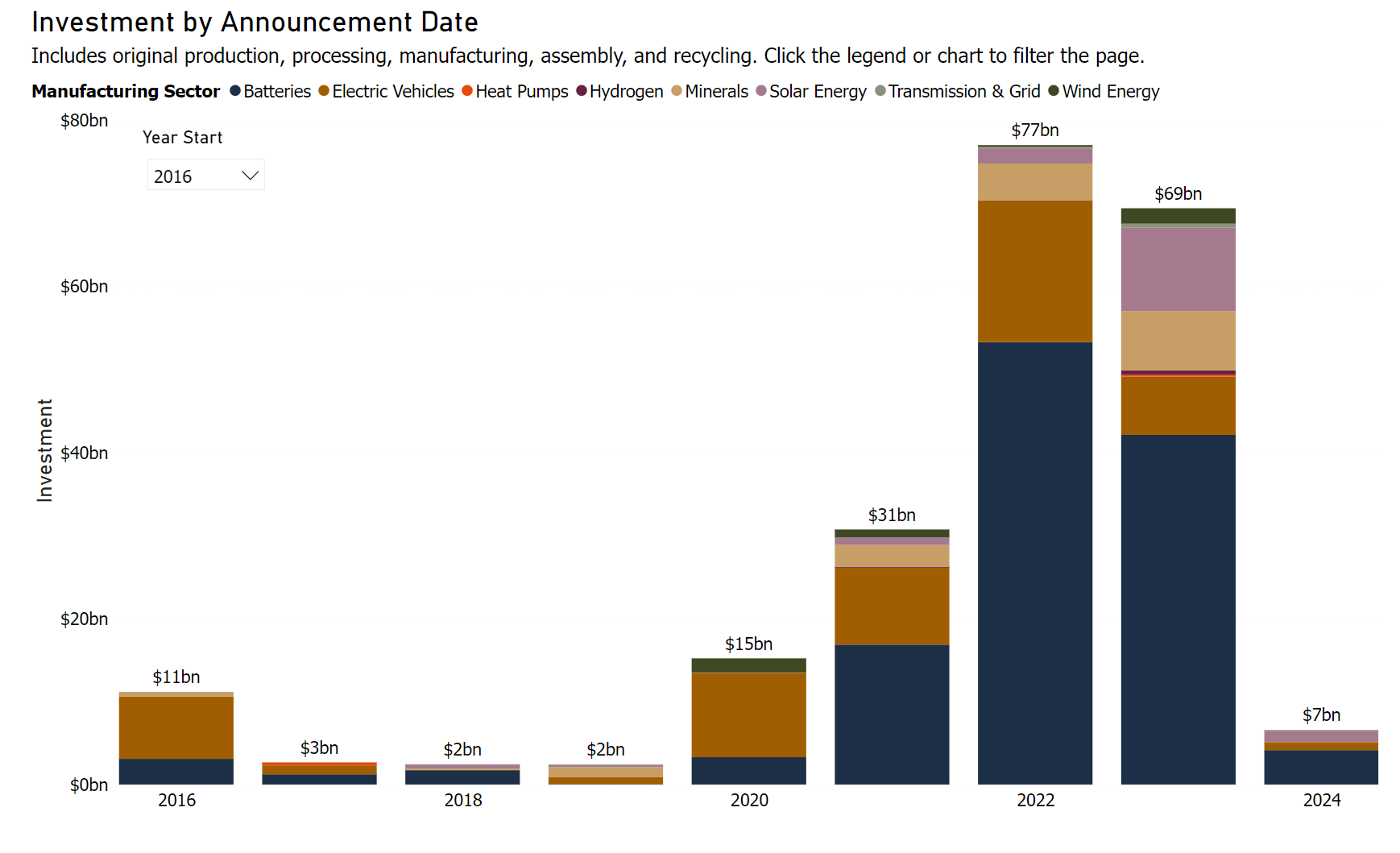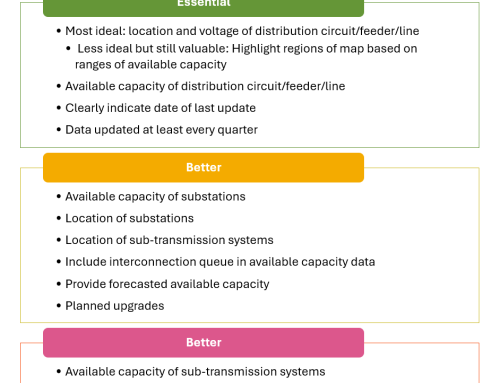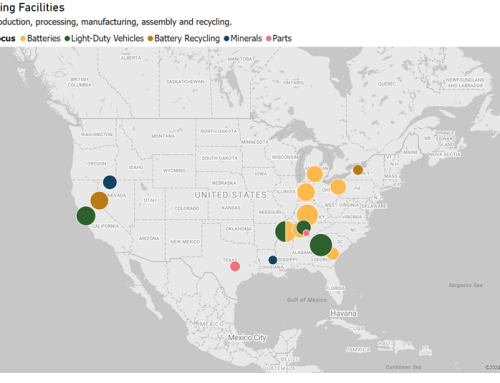
Source: Clean Economy Tracker
Investments in the U.S. domestic clean energy economy have soared to unprecedented levels, thanks in part to two landmark climate laws: the Infrastructure Investment and Jobs Act (IIJA) and the Inflation Reduction Act (IRA).
A new tool by Atlas Public Policy and Utah State University brings together announced investments and job creation across the country in clean energy manufacturing. The Clean Economy Tracker highlights private-sector investments in manufacturing a number of technologies that drive our clean energy economy forward, including electric vehicles (EVs), batteries, heat pumps, solar, and more. The tool also tracks the progress of Demonstration Projects (including the Regional Clean Hydrogen Hubs and the Carbon Capture Demonstration Projects Program) funded by the Department of Energy.
In total, the tool has tracked more than $233 billion in announced private investments for clean energy manufacturing. Companies have announced over $191 billion, or 80 percent of all clean energy investments, in EVs and batteries (including stationary batteries) to date, significantly larger than investments in other clean energy sectors. Paired with this significant investment is the announcement of at least 232,000 planned jobs across 478 facilities that process, manufacture, assemble, or recycle EVs and their batteries. Moreover, 76 percent of these investments will go to Republican-leaning congressional districts. This fact was also highlighted in coverage of the tool by the Wall Street Journal. There are further investments in the EV supply chain tracked by the tool including the extraction and processing of critical minerals for batteries not counted in these categories.
Several trends from the data emerge. First, investments in EVs and batteries are heavily concentrated in specific regions, particularly in the Midwest and the Southeast of the United States. Georgia and Michigan stand out as the frontrunners, with $26 billion and $23 billion respectively, in announced private-sector-led manufacturing investments in EVs. In both states, investments in EV battery production take the lead, including $5.2 billion in Georgia from Hyundai and $6 billion in Michigan from LG Corporation.
Second, a significant proportion of investments has been announced in rural communities (per the census definition). Over $43 billion has been announced to be invested in rural communities, creating at least 31,000 jobs. Toyota has made the largest rural EV manufacturing investment yet. The company recently announced an additional investment of $8 billion to manufacture batteries in Liberty, North Carolina, creating nearly 3,000 jobs and bringing the total investment in the site to nearly $14 billion.
Third, a close look at the data reveals that the EV and battery manufacturing investments appear to have been supercharged by climate legislation such as IIJA and IRA. Nearly $140 billion, or 80 percent of all announced investments in EVs and batteries have been announced since the passage of IIJA, creating at least 156,000 planned jobs. Investments spiked once again during Q3 2022, around the time the IRA was signed into law. Since the IRA’s passage, companies have committed nearly $100 billion towards the production of EVs and batteries.
The trends that emerged from the data may potentially shape the decisions of voters heading to the polls later this year. Approximately 45 percent of the total announced private manufacturing investment is slated to go to the eight battleground states whose electoral votes tipped the scales in the last presidential election by less than five percentage points. These crucial states, including Arizona, Florida, Georgia, Michigan, North Carolina, Nevada, Pennsylvania, and Wisconsin, are poised to economically benefit from this surge of clean energy manufacturing investments. In a likely rematch between President Joe Biden and former President Donald Trump, manufacturing jobs in the clean economy will be front and center.
The data is updated weekly and the tool is free and open to the public. Explore the Clean Economy Tracker here.


